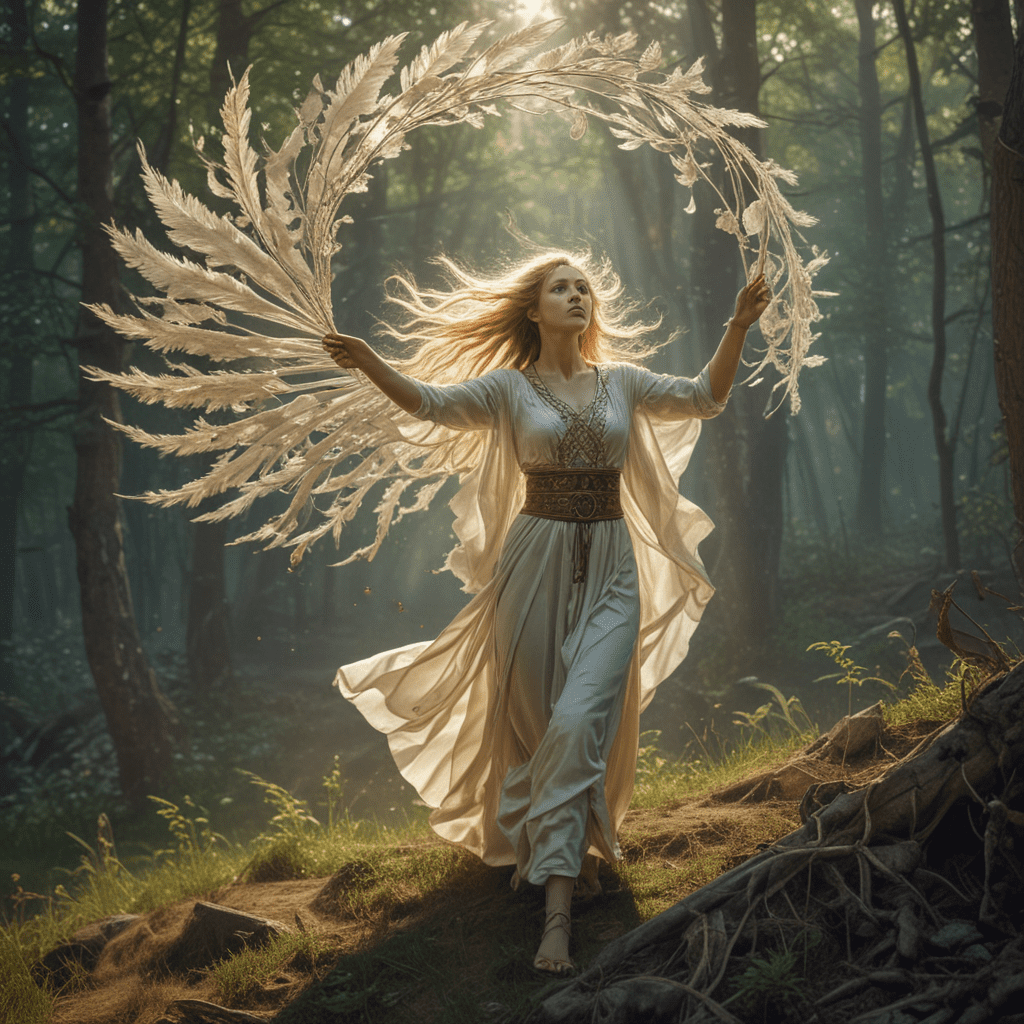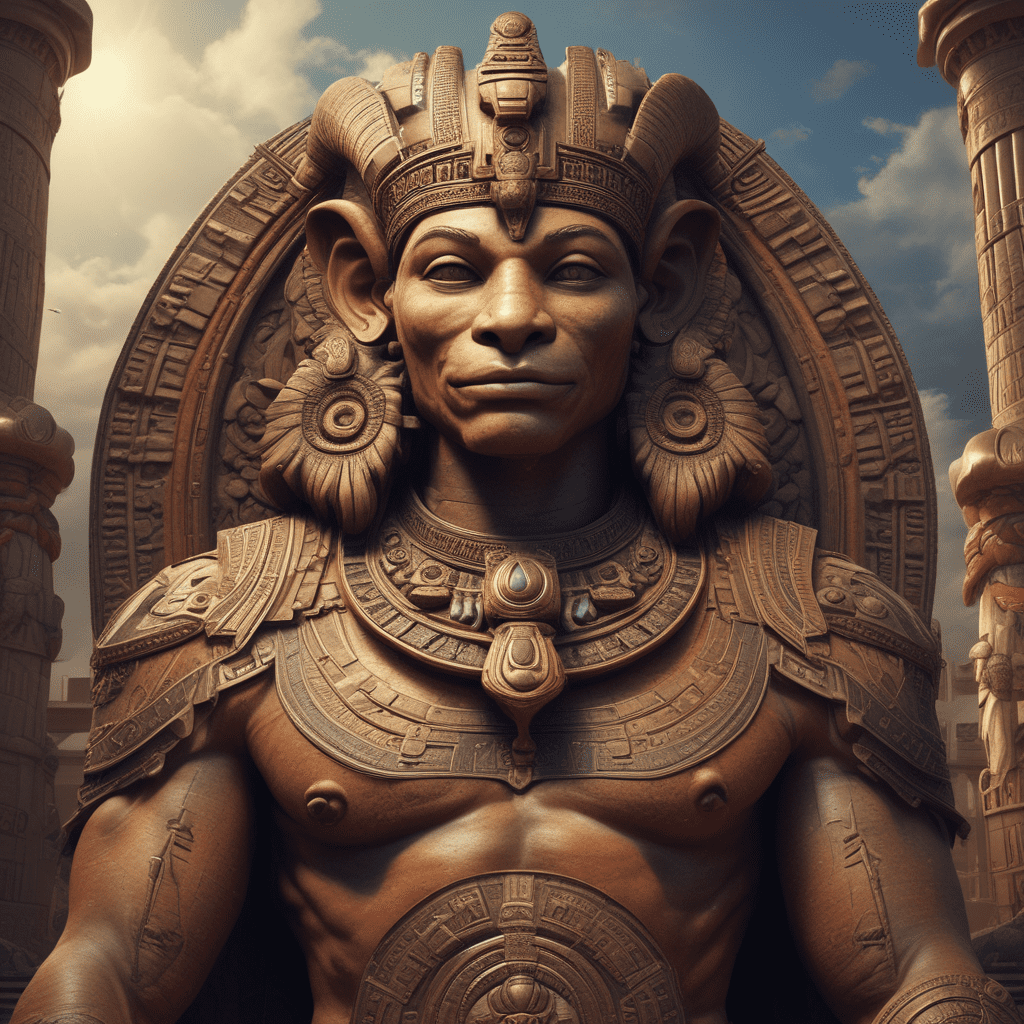Slavic Mythology: Beings of the Wind
Slavic mythology is a treasure trove of intriguing and mystical beings, and among these, the entities associated with the wind hold a special place. From benevolent guardians to mischievous spirits, the beings of the wind played significant roles in Slavic folklore and beliefs. In this article, we will explore the captivating realm of Slavic wind beings, uncovering their unique characteristics and the profound impact they had on the lives of the ancient Slavs.
I. Introduction
The Slavs, a diverse group of Indo-European peoples inhabiting Eastern and Central Europe, possessed a rich and complex mythology that reflected their deep connection to nature and the elements. Among the various forces of nature, the wind held particular significance, as it symbolized both the transformative power of change and the unpredictable nature of life's journey. The wind was personified in various forms, each embodying distinct qualities and playing a unique role within the intricate tapestry of Slavic folklore.
II. The Vetry
One of the most prominent wind beings in Slavic mythology is the Vetr, or Vetry in plural. These entities were benevolent spirits who personified the west wind. Depicted as handsome young men with flowing hair, the Vetry were often depicted as messengers of good tidings, bringing news of upcoming events or carrying prayers to the gods. They were also believed to protect travelers and sailors, ensuring safe passage on their journeys.
III. The Vikhory
In contrast to the benevolent Vetry, the Vikhory were malicious wind spirits associated with whirlwinds and storms. These creatures were depicted as monstrous beings with long, sharp claws and gaping maws filled with jagged teeth. The Vikhory were believed to cause havoc and destruction, uprooting trees, overturning carts, and even carrying away people and livestock. Their name, derived from the Slavic word for "whirlwind," aptly captured their tempestuous and unpredictable nature.
VI. The Kriechura
The Kriechura was a malevolent wind spirit associated with storms and whirlwinds. Depicted as a terrifying creature with a humanoid form and a gaping mouth filled with sharp teeth, the Kriechura was believed to possess the power to create lightning and cause destruction. It was said to be the offspring of the thunder god Perun and was often invoked in curses and incantations.
VII. The Sil'phs
In contrast to the malicious Kriechura, the Sil'phs were benevolent wind spirits associated with the east wind. Depicted as beautiful women with flowing hair and diaphanous robes, the Sil'phs were believed to bring good fortune and prosperity. They were often invoked by farmers and merchants, who sought their favor for bountiful harvests and successful ventures.
VIII. The Wieszczyki
The Wieszczyki were a group of female wind spirits who served as oracles and prophets. They were believed to possess the ability to foretell the future and were often consulted by kings and leaders seeking guidance in matters of war and peace. The Wieszczyki were also associated with healing and were invoked in rituals to cure illnesses and avert misfortunes.
IX. The Smorga
The Smorga was a benevolent wind spirit associated with the north wind. Depicted as a white-haired old woman with a kind and gentle demeanor, the Smorga was believed to bring prosperity and abundance to those who crossed her path. She was often invoked by farmers and hunters, who sought her favor for bountiful harvests and successful hunts.
X. Conclusion
The beings of the wind in Slavic mythology represent the diverse and dynamic nature of the wind itself. From benevolent guardians to mischievous spirits, these entities played significant roles in the lives of the ancient Slavs, shaping their beliefs, folklore, and daily practices. By exploring the captivating realm of Slavic wind beings, we gain a deeper understanding of the rich and imaginative world of Slavic mythology and its enduring legacy in Eastern European culture.
FAQ
Q: What role did the wind beings play in Slavic mythology?
A: The wind beings in Slavic mythology played a variety of roles, ranging from benevolent protectors to mischievous spirits. They were believed to influence the weather, bring good fortune or misfortune, and serve as oracles and prophets.
Q: Which wind being was associated with storms and destruction?
A: The Vikhory were malicious wind spirits associated with whirlwinds and storms. They were believed to cause havoc and destruction, uprooting trees, overturning carts, and even carrying away people and livestock.
Q: Who were the Wieszczyki?
A: The Wieszczyki were female wind spirits who served as oracles and prophets. They were believed to possess the ability to foretell the future and were often consulted by kings and leaders seeking guidance in matters of war and peace.
Q: Which wind being was associated with prosperity and abundance?
A: The Smorga was a benevolent wind spirit associated with the north wind. She was believed to bring prosperity and abundance to those who crossed her path and was often invoked by farmers and hunters seeking bountiful harvests and successful hunts.


